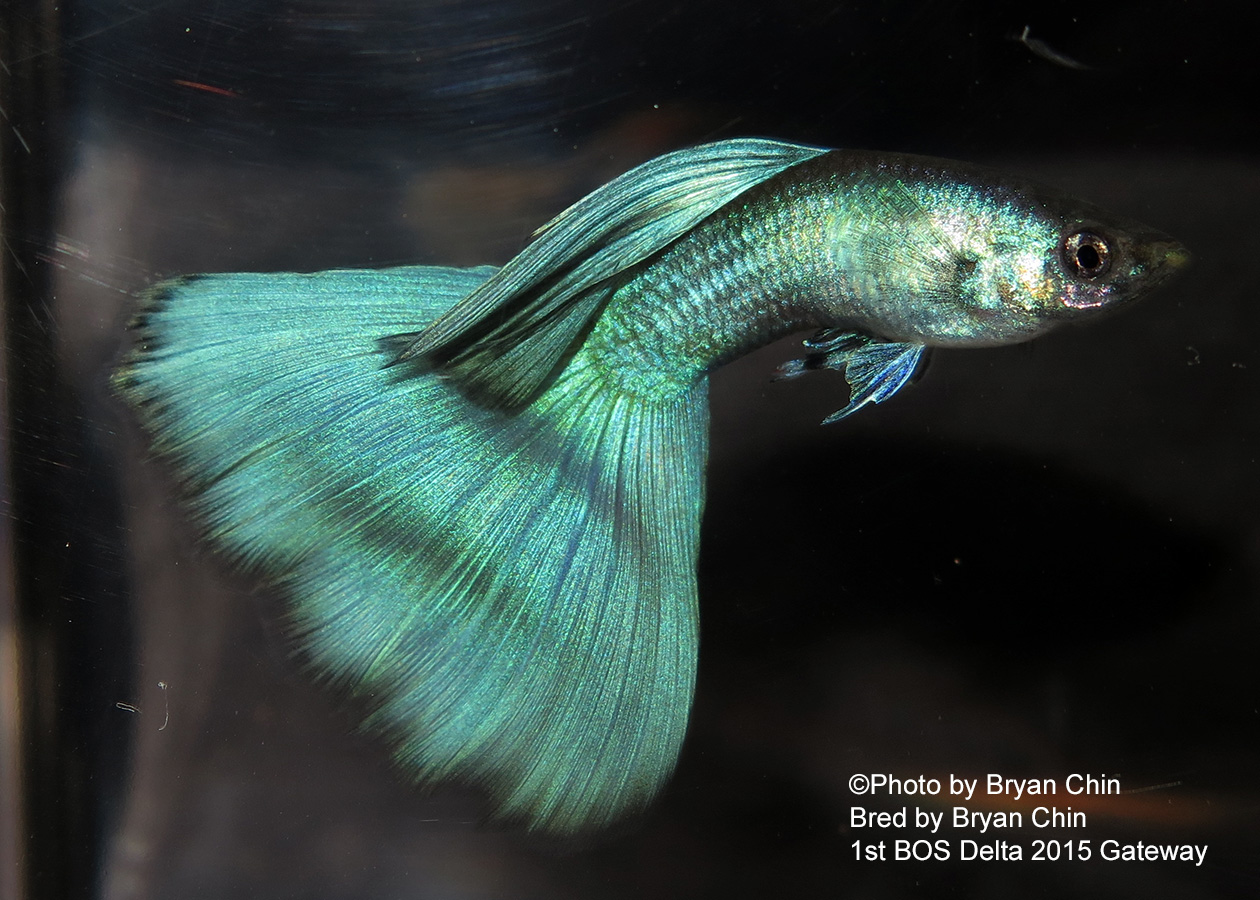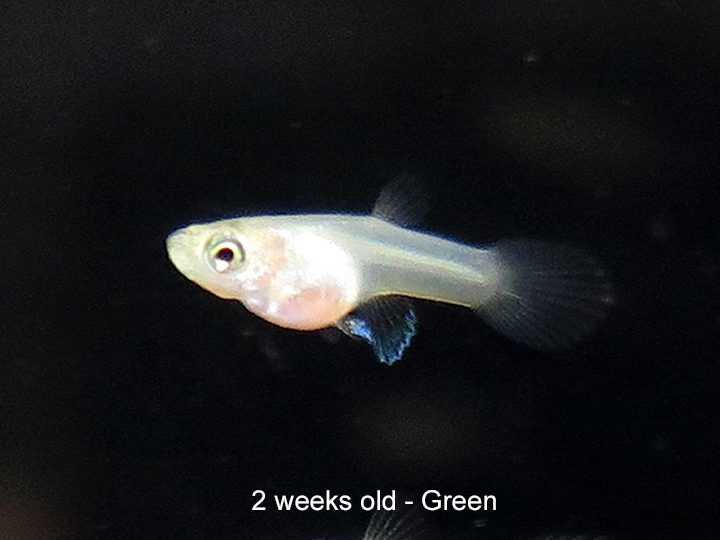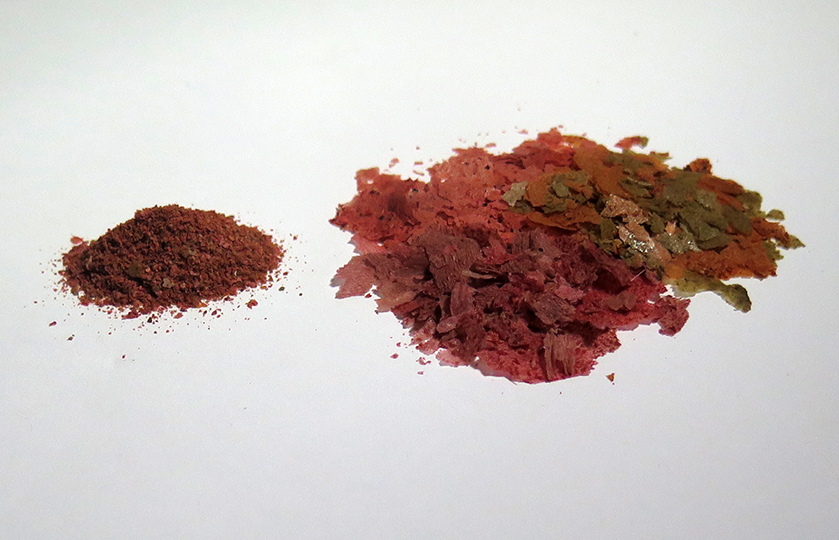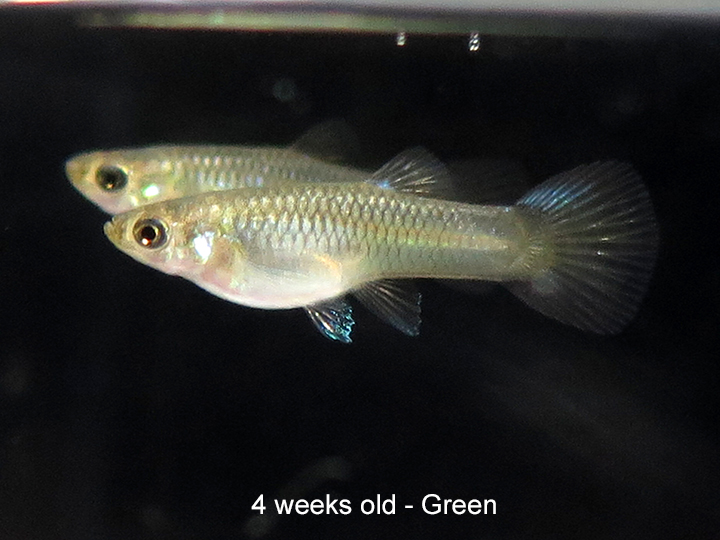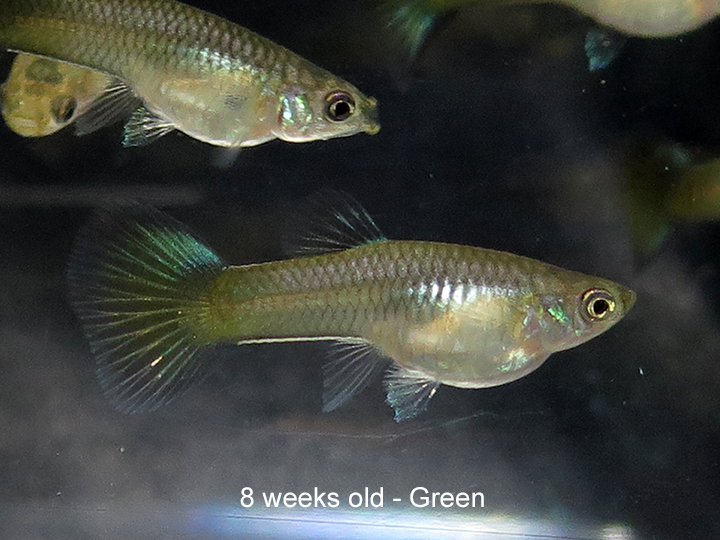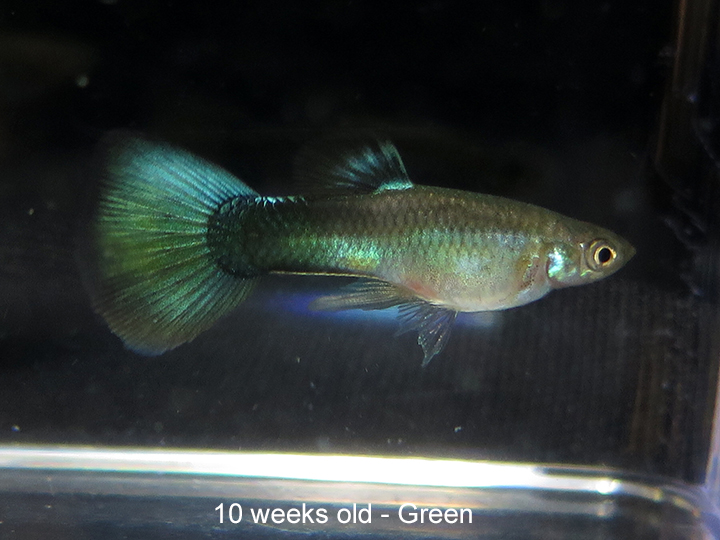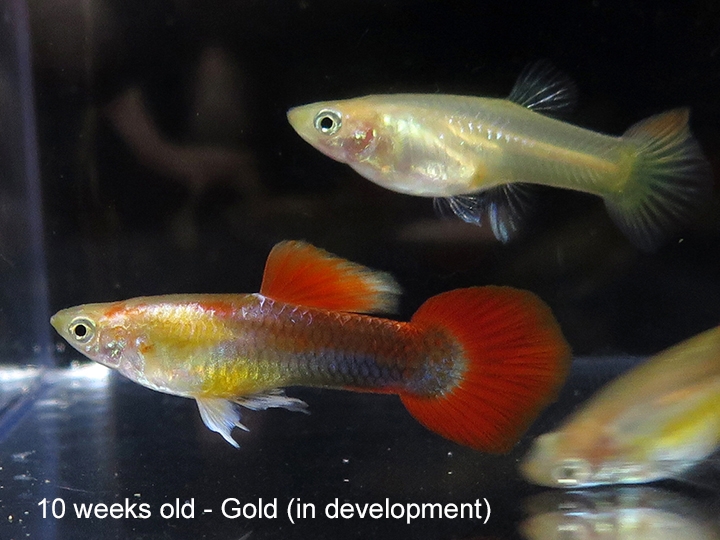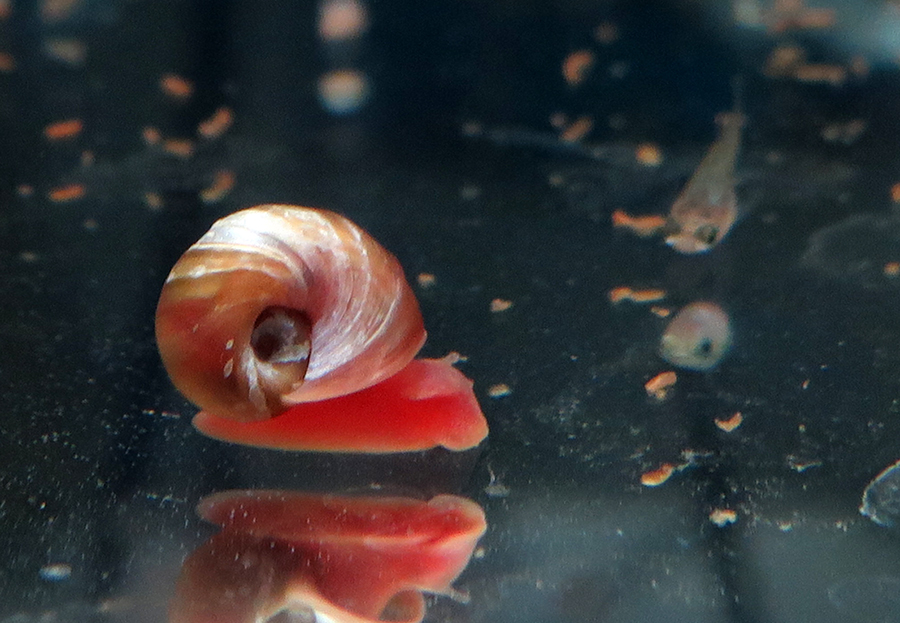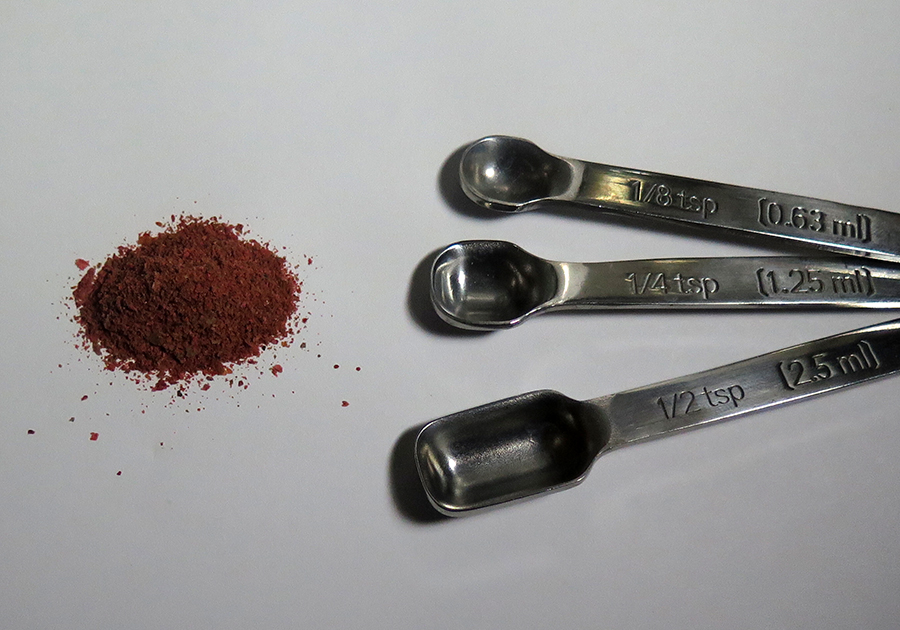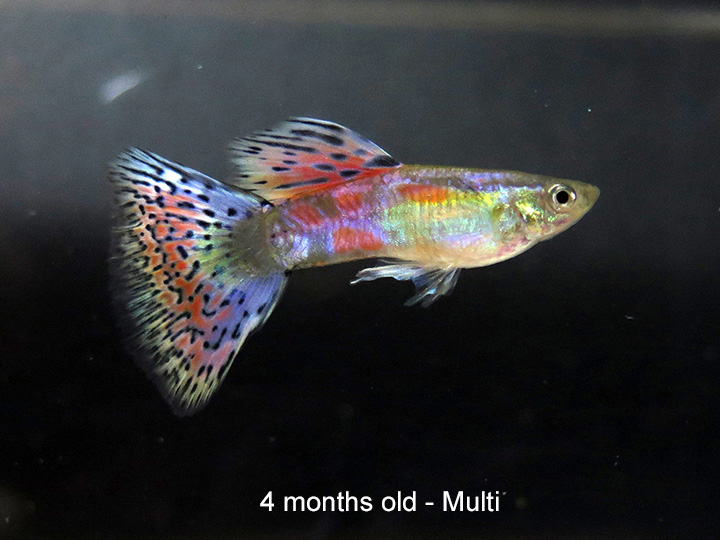Maximum Growth in GuppiesBy: Bryan ChinWith the goal of raising show winning guppies hobbyists may only focus on breeding strategies to maximize the growth to win high size points at shows. These strategies are ineffective if the water oxygen levels and proper feeding are ignored. I found that the following methods described have worked well for me. The picture below of my BOS male is a result of good growing environment, feeding and good breeding practices.
Using The Right FoodBaby brine shrimp is one of the most important foods you can feed you guppies especially to the baby guppies. Live baby brine shrimp contains nutrients that dry foods cannot provide. Live foods in general, contain enzymes that assist with guppy growth. Once a living organism dies the enzymes deteriorates and not available so the optimum nutrition is just after hatching.
Dried foods are essential in the guppy breeder’s feeding program. Look for high protein, omega 3, and vitamins. I haven’t discovered any special formula that makes a difference in growth beyond these ingredients. Guppies prefer fine sized food so if flake food is used a coffee bean grinder or food processor does a good job to reduce the size. Be sure not to grind to a powder where the food dissolves in the water before the fish can consume it. Many guppy breeders use a mixture of flake foods to assure all nutritional needs are met. The food should be easily digestible which contain large amounts of fish and crustaceans with some plant matter. Eaten foods that cannot be digested will pass through the body and contribute to the water pollution.
Balancing feeding and water conditionsFrom birth to about 4 months is the most active growing period for the guppy. The goal is to feed the growing fish enough to have available nutrition to grow. This may seem to be a simple task but there are factors to consider. Factors such as excess food and fish waste causes water conditions to deteriorate and results in reduction of available oxygen which inhibits growth and weakens the fish. The breeder’s filtration and water changing practices will determine how much food can be fed to a tank of guppies. The filtration system not only clarifies waters, but it promotes bacterial growth to breakdown ammonia to nitrites and then to nitrates which is less harmful. Ammonia, nitrites and nitrates reduces available oxygen in the water affecting guppies’ health and growth. The more food that is fed to a tank the higher the fish waste which raises the ammonia levels. The breeder must determine how efficient the filtration used breaks down these harmful components. Water test kits can assist with this determination. One test method for a ten gallon tank is to feed a consistent amount of food daily for one week and then test the water. From my testing I found that two feedings of 1/8 teaspoon of ground dry food, and one feeding ¼ teaspoon of drained live brine shrimp is a about the limit per day with my filtration and weekly 30% water change for a 10 gallon tank. Water changes reduce the concentration of ammonia, nitrites, and nitrates. Increased frequency of water changes can increase the amount of food that can be fed to a tank. Excessive water changes can reduce the good bacteria levels where it inhibits the breakdown of ammonia and nitrates causing an environmental crash. I would recommend no more than 2 water changes of 30% a week.
Tank Population
After the food limit has been determined, this will dictate the population of a tank. For example a 10 gallon tank of 60 one month old babies is reduced to 20-30 as they grow to adulthood. The amount of food stays constant and as the population is reduced which increases the amount of food per fish. Reducing the population is necessary to keep optimum water conditions and feeding to promote good growth. Good guppy breeding practices of sexing the guppies at 6 weeks and culling helps with this reduction. Overpopulated tanks will result in smaller fish since there is not enough available oxygen to grow larger. Overfeeding of what the tank can handle will reduce the oxygen level more effecting growth and weakening the fish. Catfish and Algae Eaters
Guppy breeders often use scavenger fish such as catfish and Plecostomus to eat uneaten food and algae in the tank. This can actually reduce the amount of food available to the guppies. Once the food reaches the tank’s floor the food is eaten by the scavenger fish. Since the amount of food is fixed to keep good water quality, the guppies may not get enough food to get optimal growth if eaten by scavenger fish. I use rams horn snails to control algae and to eat uneaten food. Snails move slowly so the guppies have a chance to pick food off the bottom. A breeder can use scavenger fish if they reduce the number of guppies to have enough food for the guppies before it reaches the tank’s floor. Signs of Poor Water ConditionsA guppy breeder can visually tell if a tank’s water conditions are poor. Even if a tank’s water is clear the ammonia and nitrite level can be at dangerous levels. Guppies in distress will have fish hovering at the top water surface gasping for oxygen or have loss of appetite. Hobbyists often view this as a parasite issue and treat the water with medication and exasperate fish’s distress. The best way to address this issue is to do a 40% water change, filter floss change (sponge rinse in color water to get rid of excess debris) with medication to cover all possibilities. If the issue is water conditions the guppies will improve within a few hours. Often poor water conditions will weaken the fish which opens them up to be affected by bacteria and fungus. I have found that keeping with weekly 30% weekly water changes, cleaning filters/changing floss every 5 weeks (without destroying the biologicals by cold water rinse of ceramic rings), and controlled feeding has dropped my occurrence of sick fish dramatically. Observing If Guppies Are Fed Enough
|
Breeding and Showing Guppies
| Contact |
